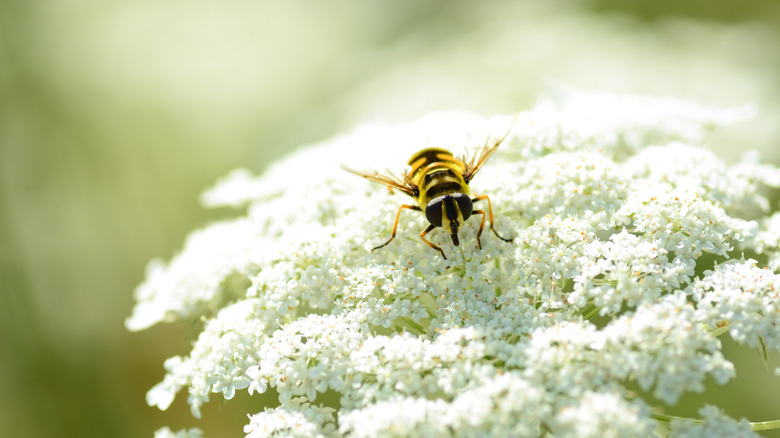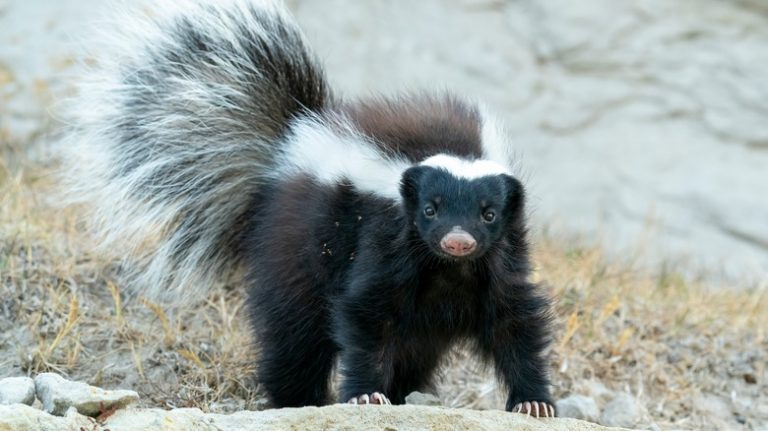Even though bees and wasps are both pollinators, you might be determined to keep these stinging insects away from your home. However, they have a twin that won’t sting you, and that’s beneficial to your garden, too: the hover fly.
These bee and wasp look-alikes are also known as the flower fly or syrphid fly. They can hover and change direction midair, and they love flowers, hence their names. (“Syrphid” comes from their family, Syrphidae.) While they’re often shaped and colored like bees and wasps, their wings tend to give them away: Wasps and bees have four wings, but flies only have two. They also have huge eyes characteristic of flies. Still, if you’re afraid of getting stung, you might not get close enough to look.
Having the stripes and size of a stinging insect helps hover flies stay safe from predators. However, as flies, they don’t have stingers of their own.
How hover flies help your garden

Hover flies eat pollen and nectar from flowers, but even better is what their larvae eat. Aphids are a favorite meal for young hover flies. Because aphids are notorious plant killers, this means hover flies are a great help to have in a garden. If you notice rice-like eggs near an aphid colony, those might be hover fly eggs.
They also eat other pests, like young leafhoppers and thrips. They reproduce often, so you might have as many as seven generations of hover flies in a single gardening season. That means lots of chances for hover flies to eat local pests for you!
These flies demonstrate the value of avoiding powerful pesticides in your garden. While many pesticides aim to kill every bug in sight (even the good ones), hover flies are a natural solution to pest problems, giving you a healthier garden overall.
Encouraging hover flies to stick around

If you have flowers in your garden, you’re likely already attracting hover flies. The more often flowers are in bloom, the better your chances of attracting them. As long as they’re not in the way of your plants, a few blooming weeds can even help attract these beneficial bugs until the other flowers take off.
You’ll also need to be willing to let pests thrive just a bit. Aphids and other small bugs provide food for hover fly larvae, so if you kill them all, you won’t have hover flies around. If you see hover fly eggs or their small caterpillar-like larvae, leave them be to handle the pests for you.
If you don’t have hover flies yet, consider using natural pest control instead of insecticides, giving them a chance to show up. Windbreaks can also help encourage hover flies to stick around because they won’t fly where it’s windy. As an added bonus, windbreaks help protect your plants from damage.
Lastly, resist the urge to swat or kill everything with black and yellow stripes. Whether it’s a bee or a hover fly, you’re better off having these critters around to help your garden grow.




